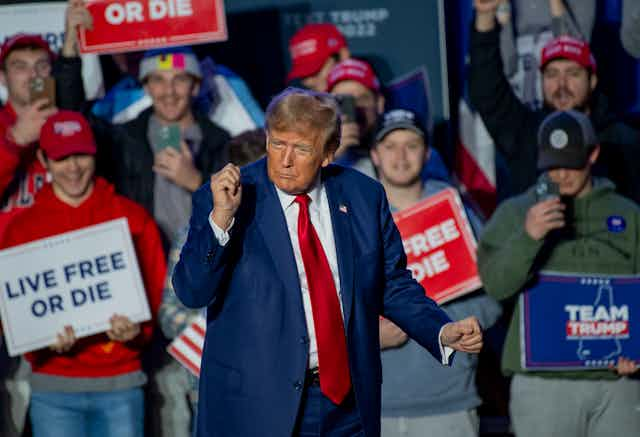“Fake news” loves a crisis. It’s clear now that false information has played a role in recent events around the world from divisive elections to the COVID pandemic to the conflict roiling Israel and Gaza.
It is important to counter false claims and false narratives. And research now shows a lot more clarity about how to do this.
In a rather downbeat article in September 2023, the New York Times (NYT) reported that “the momentum behind organizations that aim to combat online falsehoods has started to taper off”. It reported that the number of fact-checking operations around the world had “stagnated”, after rising from 11 in 2008 to 424 in 2022 and dropping slightly to 417 today.
The NYT report captured some of the well-known challenges fact-checkers face. But it offered a distressingly narrow picture of the work they actually do every day, how the fact-checking community’s approach to countering false information has evolved, and the different ways their work can make a difference in the world.
On numbers alone, the picture is more complex than was presented. Africa Check, the first fact-checking organisation in Africa, has grown from a team of two in 2012 to a staff of 40 with offices in four countries today.
The same is true of Maldita – which started as a Twitter account run by two TV journalists and today has a staff of more than 50. In some regions, the number of operations has fallen back. In others, Africa, the Middle East and Asia, it is still growing.
A second challenge is one of scale. Since fact-checkers around the world started contributing to a database of checks operated by Google, known as Claim Review, they had, as of late September 2023, verified almost 300,000 true and false claims.
That is an impressive number but tiny by comparison with the scale of the problem, which may, of course, be worsened by AI. Groups such as UK fact-checking charity Full Fact are developing AI to help spot false claims and boost the reach of fact-checks.
Does fact-checking work?
A series of studies published over recent years have shown that, while fact-checks will, of course, not alter an individual’s long-held worldview, they can and do have “significantly positive overall influence” on reader’s factual understanding and “reduce belief in misinformation, often durably so”.
What’s more, two recent studies have shown that so-called “warning labels” attached to online content “effectively reduce belief and spread of misinformation” and do so “even for those most distrusting of fact-checkers”.
The problem, correctly identified by the NYT, is that this success “is inconsistent and contingent on many variables”. A first challenge is that those who see and believe misinformation are, often, not the same as those who see and believe the subsequent fact-checks. The two audiences often do not cross over.

Fact-checkers also understand the limits of information as a tool for countering misinformation. They see daily evidence in emails and comment threads that, while some appreciate their work, others reject it. Like countless journalists, fact-checkers accept that their work doesn’t reach everyone it should. Most argue that exposing falsehoods and hoaxes is worth the effort, nevertheless.
Correcting the record
But informing the public is only one way fact-checking organisations make a difference. First, research confirms what many fact-checkers see firsthand: knowing someone is checking will often push politicians to be more careful with their claims.
Obvious exceptions aside, many public figures will quietly drop a claim after it’s been debunked – or even issue a mea culpa. This happened this year in Kenya when police apologised “unreservedly” after fact-checkers at AFP news agency caught them using unrelated images of one protest to hunt down those involved in another.
Many operations take a direct approach, contacting media outlets or political campaigns to ask them to correct the record. And in many countries, fact-checkers intervene at a structural level to promote a culture of accuracy in key institutions.
British lawmakers last month voted to change House of Commons rules on correcting the official record, following a campaign by the fact-checkers Full Fact.
In some regions, fact-checkers work with statistical agencies, advocate for open government, operate broad coalitions against misinformation and run media literacy programs. In the Arabic-language world, the Jordan-based Arab Fact-Checkers Network trains media in in-house fact-checking, to reduce the spread of false information prior to publication. In Europe, the European Fact-Checking Standards Network, has a team who work on public policy – something not possible in many parts of the world.
This growing breadth of approaches reflects how our understanding of false information has changed.
As Tom Rosenstiel of the University of Maryland noted in 2017: “Misinformation is not like plumbing, a problem you fix. It is a social condition, like crime, that you must constantly monitor and adjust to.” It also reflects the different organisational cultures of operations set up by media companies, and by civil society and academic institutions.
The picture, in summary, is more complex than was suggested, and in many, if not all, parts of the world, more hopeful too.

